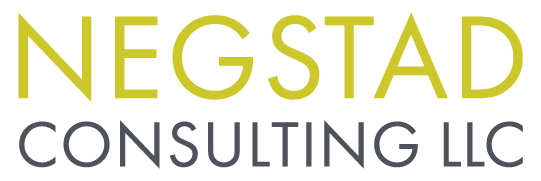5 Minutes on Leading Through Complexity Challenges
I went on my annual reading retreat this summer and found myself particularly inspired by one book I brought with me:
“Presence-Based Leadership: Complexity Practices for Clarity, Resilience, and Results that Matter,” by Doug Silsbee
Doug is the founder of Presence-BasedⓇ Coaching, the coaching training program that I completed. He passed away in 2018 from aggressive cancer and this was his last book. It is such a gift that he left, imparting great wisdom for leaders.
It combines two of my favorite subjects - leadership self-awareness and complexity theory.
It’s all about how to lead and live in uncertainty.
One thing the book made clear, no one is ever ready for complexity. The future is unknowable, so there is not enough expertise in the world we can bring to it to be prepared. We must learn to live and work with complexity and the discomfort it brings.
The most effective leaders encounter uncertainty as a challenge, and a call, to learn, grow, and develop.
This requires us to leave behind perfectionism and control.
We are used to saying to ourselves, “I should know how to do this.” But with complexity, we actually can’t know. We have to learn to see it as an opportunity for learning and growth.
Our world is not short of complexity and uncertainty. And never has been.
You know you are facing a complex challenge when it is “sticky.” It doesn’t just go away. And it is filled with uncertainty.
Complex challenges can look like:
A changing funding landscape
Shifting and uncertain political priorities
How to use but mitigate danger of AI
Rising burnout and stress of our staff
Multifaceted, entangled, and evolving community needs
Tough, right? Did one of these resonate with you? Did another complex situation come to you? Keep it in mind. We’re going to explore it using a resource from the book.
That’s one of the things I love about this book by Doug. It’s filled with experiments, ideas, and practical steps to take.
Let’s dig into one together.
Below I’ve adapted a list of questions Doug presents in the book on page 30. Keep your complexity challenge in mind as you consider the following questions.
6 Angles for Examining Complexity Challenges (Questions from Doug Silsbee):
External Context: What changes if you simply recognize that the context is what it is, and you accept this?
Language: As you examine the words you use to describe your Complexity Challenge, what new words might be a way to describe the challenge, enabling you to see your Challenge differently?
Perspectives: What are some other perspectives you could take on your Complexity Challenge and how does that change your relationship to it?
Meaning-Making: How might this Complexity Challenge - however difficult it may seem - be preparing you for something unforeseen in the future?
New Capacities: What new capacities as a leader can you imagine would be helpful in this challenge?
Presence: How might staying with your present-moment experience be supportive of you?
Let’s run through these with a hypothetical that is likely to be familiar to almost everyone.
Scenario: Funding uncertainty is increasing. Federal grants are changing, donors are becoming more fickle, and our existing funding model feels increasingly tenuous.
1. External Context: What changes if you simply recognize that the context is what it is, and you accept this?
Example: “If I recognize that funding uncertainty is increasing and likely to keep shifting, I can start to let go of our current funding model. I can practice being open to new models and build the organization’s capacity to adapt more frequently.”
2. Language: As you examine the words you use to describe your Complexity Challenge, what new words might be a way to describe the challenge, enabling you to see your Challenge differently?
Example: “The new funding landscape is forcing us to be more creative, more diverse, and more agile. These shifts are likely to serve us well in any scenario.”
3. Perspectives: What are some other perspectives you could take on your Complexity Challenge and how does that change your relationship to it?
Example: “Some colleagues have felt that our funding model has been flawed for some time, maybe they were right. Maybe donors are becoming more savvy and can serve as stronger partners.”
4. Meaning-Making: How might this Complexity Challenge - however difficult it may seem - be preparing you for something unforeseen in the future?
Example: “Tackling this challenge now is building our capacity to recognize complexity challenges and trust in our resilience to adapt, try new things, and learn from failures or wins.”
5. New Capacities: What new capacities as a leader can you imagine would be helpful in this challenge?
Example: “I need to strengthen my ability to bring others in, to listen, and to sit with discomfort.”
6. Presence: How might staying with your present-moment experience be supportive of you?
Example: “The uncertainty and change is really uncomfortable, but, if I’m honest with myself, it’s stressful to keep pretending we can keep going as we have. We know change needs to happen. There’s relief in accepting that.”
Even just one of these questions might be enough to inspire an “aha” moment or give you a new insight that changes your strategy, leads you toward a next step, or reveals a new question.
When you’re moving through a sticky situation you could even revisit these questions every few months. You can reflect on them on your own or with a team. Take them one at a time or run through all six.
If this type of work resonates with you, I highly recommend the book. To me, it reads like a text book. Something you want to move through slowly, referencing it again and again, and going through the exercises.

